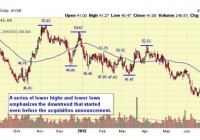Why Do Fundamentals Matter?
With a booming market, everyone forgets fundamentals. Someone, the other day, told me that “You don’t need profits to pay bills” when talking about Amazon. If that’s not a sign of euphoria and not understanding how wealth is built, I don’t know what is. The reason fundamentals matter in the long run is that wealth is built on cash flow, profit, and overall returns. Yes, a company can profit but if you’re paying too much for that profit, it’s going to hurt you in the long run because there will be a time when your investment is out of style and everyone will revert back to fundamentals. It happens in every bear market. People flee the exciting fast growing stocks that aren’t doing as well financially to go to companies that generate cash flow and build their balance sheet. Not only in stocks. Real estate as well. The last 15 years have been a boom in real estate, even after a big bust. Real estate is driven by income. I randomly pulled 28 markets that I could think of in this country and looked at their median income growth and their real estate value growth since 1990. The direct correlation from one city to another wasn’t exactly there, but when you looked at all 28 cities as a whole, they were very much in line. Median income growth was 2.32% per year on average and the average real estate growth was 2.6% per year. Not exact, but close. During the recent 15 years of booms in major markets (that were also in my 28 city analysis), we were seeing 15-20% growth per year even though income wasn’t growing NEARLY as much. Then we saw a massive drop in prices and another rebound, so everyone assumes that the past problems were past problems. We shall see. The bottom line is that everything reverts to the mean. We are never exactly fairly valued. We are either overvalued or undervalued in every investment asset. You are either a buyer or seller of assets. It’s that simple. I choose to wait until asset prices get to the point where they are undervalued enough to make me feel that above-average returns will be experienced based on historical averages. Does it require A TON of patience? Absolutely. Is it frustrating at times? 100%. To hear the so-called “experts” tell me that I’m missing it and I don’t understand and “This time is different” has become annoying. But I stick to fundamentals. And at the end of the day, they win out. Fundamentals are the only true way to measure value. You have to find out what truly defines the price of an asset and buy when the asset is selling for below that fundamental point. Is it just one thing? No. But is it a ton of complicated points? Absolutely not. There are a few things that matter when looking at investments and it is the job of a true investor to understand what those are and where they have stood historically (not just over 25 years but over 60+ years). Share this article with a colleague
